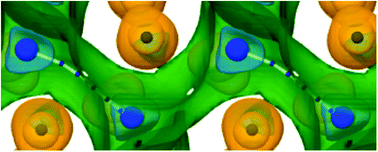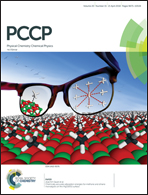A first principle comparative study of the ionic diffusivity in LiAlO2 and NaAlO2 polymorphs for solid-state battery applications†
Abstract
Lithium aluminates are attracting increasing attention as battery materials. They are typically used for the coating of electrodes. The diffusive properties of the equilibrium tetragonal phase (γ) are well understood from both an experimental and a theoretical perspective, and the major diffusive mechanism is recognised to be vacancy hopping between neighbouring sites. Investigations of this type are however not reported for other, high-pressure LiAlO2 phases. Moreover, the ionic diffusivity of the Na-based aluminates, manifesting a similar polymorphism to LiAlO2, has never been studied using atomistic techniques. In this work, we address these points, by presenting a comparative density functional theory-based study of these materials, describing the structural properties of the various phases, and evaluating the activation energies for single vacancy hops. While LiAlO2 exhibits a poor ionic conductivity due to a significant degree of covalency of the Al–O bonding, orthorhombic β-NaAlO2 exhibits a significantly lower diffusion barrier. This feature cannot be explained only in terms of the larger equilibrium volume, as the same trend is not observed for the high-pressure trigonal α-LiAlO2 and α-NaAlO2. We utilise here various electronic-structure tools to verify the lower degree of covalency of the Na–O bonds. The electron localisation function, in particular, is shown to be intrinsically correlated to the diffusion pathways of Li and Na ions, and its variation along the path is a qualitative measure of ionic conductivity.

- This article is part of the themed collection: 2018 PCCP HOT Articles


 Please wait while we load your content...
Please wait while we load your content...